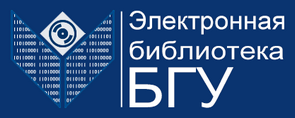Пожалуйста, используйте этот идентификатор, чтобы цитировать или ссылаться на этот документ:
https://elib.bsu.by/handle/123456789/262927Полная запись метаданных
| Поле DC | Значение | Язык |
|---|---|---|
| dc.contributor.author | Novotny, R. W. | - |
| dc.contributor.author | Brinkmann, K.-T. | - |
| dc.contributor.author | Dormenev, V. | - |
| dc.contributor.author | Drexler, P. | - |
| dc.contributor.author | Korjik, M. | - |
| dc.contributor.author | Kozlov, D. | - |
| dc.contributor.author | Zaunick, H.-G. | - |
| dc.date.accessioned | 2021-06-29T12:51:12Z | - |
| dc.date.available | 2021-06-29T12:51:12Z | - |
| dc.date.issued | 2019 | - |
| dc.identifier.citation | Journal of Physics: Conference Series; 2019. | ru |
| dc.identifier.uri | https://elib.bsu.by/handle/123456789/262927 | - |
| dc.description.abstract | The application of crystalline materials in ionizing radiation detectors has played a crucial role in the discovery of the properties of matter. However, the experiences gathered at high intensity machines such as the LHC have indicated their limitations and underlined the requirements for materials being more tolerable to radiation damage in particular caused by energetic hadrons. Systematic studies of the radiation hardness of inorganic optical and scintillation materials propose both oxide and fluoride crystals composed of atoms with atomic numbers below 60. In this study we report on a cheap glass (BaO∗2SiO2) and DSB: Ce glass ceramics even capable for mass production. Admixing gadolinium oxide (Gd3+) even provides a two times larger light yield. Both types of the materials can be produced in a fibre and bulk geometry. This paper summarizes the overall performance and reports on a first test of a 3x3 matrix of large volume samples exposed to energy-marked photons up to 180 MeV. | ru |
| dc.description.sponsorship | The investigations have been performed within the framework of the Crystal Clear Collaboration and have been supported by the EU-Project 644260 – INTELUM. | ru |
| dc.language.iso | en | ru |
| dc.publisher | Institute of Physics Publishing | ru |
| dc.subject | ЭБ БГУ::ЕСТЕСТВЕННЫЕ И ТОЧНЫЕ НАУКИ::Физика | ru |
| dc.title | Performance of DSB - A new glass and glass ceramic as scintillation material for future calorimetry | ru |
| dc.type | conference paper | ru |
| dc.rights.license | CC BY 4.0 | ru |
| dc.identifier.DOI | 10.1088/1742-6596/1162/1/012023 | - |
| dc.identifier.scopus | 85066326248 | - |
| Располагается в коллекциях: | Статьи НИУ «Институт ядерных проблем» | |
Полный текст документа:
| Файл | Описание | Размер | Формат | |
|---|---|---|---|---|
| Novotny_2019_J._Phys.__Conf._Ser._1162_012023.pdf | 1,45 MB | Adobe PDF | Открыть |
Все документы в Электронной библиотеке защищены авторским правом, все права сохранены.

